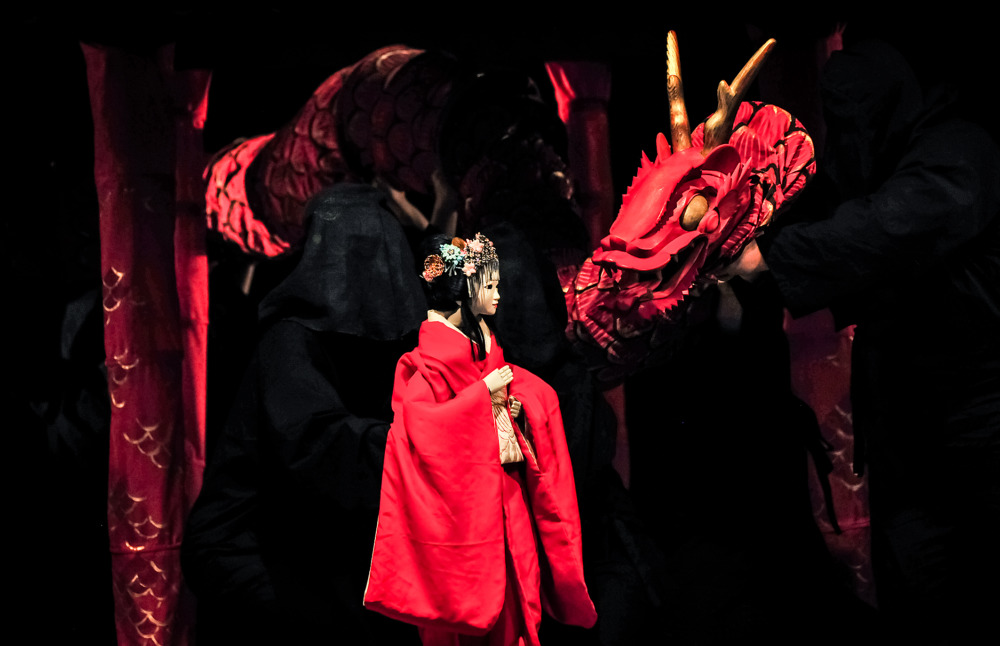Japan’s rich cultural tapestry is woven with various traditional performing arts that have mesmerized audiences for centuries. Among these, Bunraku (traditional puppetry), Noh, and Kabuki stand out as iconic forms of Japanese theater. We will delve into the fascinating world of Bunraku, explore the best locations to experience this traditional puppetry, and compare it with the ancient art forms of Noh and Kabuki. Whether you are a theater enthusiast or a traveler seeking cultural experiences, this guide will provide you with valuable insights and tips for your next trip to Japan.
What is Bunraku?

Bunraku, also known as Ningyō Jōruri, is a traditional form of Japanese puppet theater that originated in Osaka during the Edo period (1603-1868). It combines the artistry of puppetry with the dramatic narrative of Jōruri (a form of chanted storytelling). Bunraku puppets are operated by skilled puppeteers, while a narrator (tayū) and a shamisen player provide the dialogue and musical accompaniment.
Key Features of Bunraku:
- Puppeteers: Each puppet is operated by three puppeteers: the main puppeteer (omozukai) controls the head and right hand, the left puppeteer (hidarizukai) controls the left hand, and the foot puppeteer (ashizukai) manipulates the legs and feet.
- Realism: Bunraku puppets are highly detailed and expressive, allowing for a wide range of emotions and movements. The puppeteers’ coordinated efforts create a lifelike performance.
- Narration and Music: The tayū narrates the story, voices the characters, and conveys the emotions of the scenes. The shamisen player enhances the narrative with evocative music.
Best Locations to Experience Bunraku
- National Bunraku Theatre, Osaka
- Overview: As the birthplace of Bunraku, Osaka is home to the National Bunraku Theatre. This prestigious venue regularly hosts Bunraku performances, showcasing classic plays and contemporary works.
- Location: 1-12-10 Nipponbashi, Chuo-ku, Osaka
- Highlights: Visitors can enjoy full-scale Bunraku productions, watch rehearsals, and participate in workshops to learn about the art form.
- Edo-Tokyo Museum, Tokyo (Closed until 2025)
- Overview: While primarily a museum, the Edo-Tokyo Museum occasionally hosts Bunraku performances as part of its cultural exhibitions. The museum offers a glimpse into the history and development of Bunraku.
- Location: 1-4-1 Yokoami, Sumida-ku, Tokyo
- Highlights: The museum’s Bunraku performances provide an educational experience, allowing visitors to appreciate the intricacies of the art form.
- Awaji Puppet Theater, Awaji Island
- Overview: Awaji Island is renowned for its traditional puppet theater, with a history that predates Bunraku. The Awaji Puppet Theater offers captivating performances rooted in local folklore.
- Location: 1528-1 Fukura, Minamiawaji, Hyogo
- Highlights: The theater’s performances are deeply connected to the island’s cultural heritage, offering a unique perspective on Japanese puppetry.
Comparing Bunraku, Noh, and Kabuki
While Bunraku is a captivating form of Japanese theater, it is often compared to Noh and Kabuki, two other traditional performing arts that have shaped Japan’s cultural landscape.
Noh: The Art of Subtlety and Elegance

- History and Origins: Noh, the oldest of the three art forms, dates back to the 14th century. It was developed by Kan’ami and his son Zeami and has its roots in ancient religious and folk rituals.
- Performance Style: Noh is characterized by its minimalist and slow-paced performances, with actors wearing elaborate masks and costumes. The use of poetic language and symbolic gestures creates a meditative atmosphere.
- Themes and Stories: Noh plays often explore themes of spirituality, the supernatural, and the human condition. Common subjects include ghost stories, historical events, and mythological tales.
- Music and Dance: Noh performances are accompanied by a small ensemble of musicians playing traditional instruments, such as the flute and drums. Dance and chant are integral parts of the performance.
Kabuki: The Spectacle of Drama and Dance

- History and Origins: Kabuki emerged in the early 17th century as a more accessible and entertaining form of theater. It was founded by Izumo no Okuni, a female performer who drew large crowds with her innovative style.
- Performance Style: Kabuki is known for its flamboyant and dynamic performances, featuring exaggerated movements, colorful costumes, and dramatic makeup. The actors, known as onnagata (male actors playing female roles), are highly skilled in portraying various characters.
- Themes and Stories: Kabuki plays cover a wide range of themes, from historical dramas (jidai-mono) to domestic stories (sewa-mono) and supernatural tales. The performances often include spectacular stage effects and acrobatics.
- Music and Dance: Kabuki is accompanied by a lively ensemble of musicians playing traditional instruments, such as the shamisen, drums, and flutes. Dance plays a significant role in conveying the emotions and actions of the characters.
Conclusion
Bunraku, Noh, and Kabuki are integral parts of Japan’s cultural heritage, each offering unique and captivating experiences for audiences. Whether you are drawn to the lifelike puppetry of Bunraku, the subtle elegance of Noh, or the dramatic spectacle of Kabuki, exploring these traditional art forms will deepen your appreciation of Japanese theater. By visiting the best locations to experience Bunraku and understanding the distinctions between these art forms, you can enrich your travel experience and gain a deeper insight into Japan’s cultural legacy.
Plan your next trip to Japan and immerse yourself in the world of traditional puppetry, Noh, and Kabuki. Witness the artistry, history, and passion that continue to captivate audiences and preserve Japan’s theatrical traditions for generations to come. And make sure to create your itinerary for free at https://www.dekitabi.com.


Leave a Reply